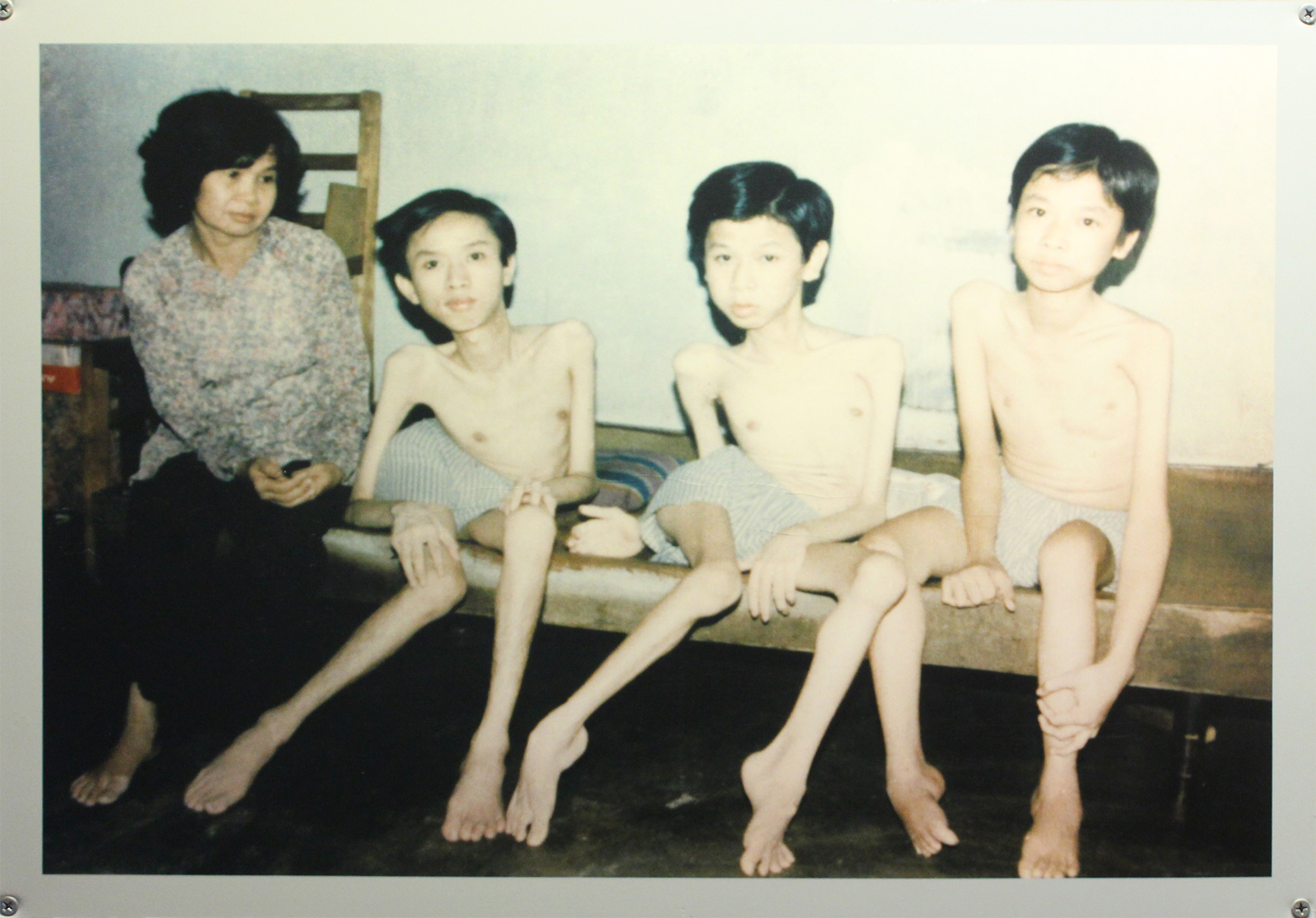

For more information about service qualifications and other eligibility criteria, visit our Agent Orange C-123 web page. In addition, VA has determined there is evidence of exposure to Agent Orange for Air Force and Air Force Reserve members who served during the period 1969 through 1986 and regularly and repeatedly operated, maintained, or served onboard C-123 aircraft (known to have been used to spray an herbicide agent during the Vietnam era). and in other countries as far back as the 1950s. military to defoliate military facilities in the U.S. military sprayed in the jungles of Vietnam and around the Korean demilitarized zone to remove trees and dense tropical foliage that provided enemy cover. "Agent Orange" refers to a blend of tactical herbicides the U.S. Your dependents and survivors also may be eligible for benefits. Veterans who were exposed to Agent Orange or other herbicides during military service may be eligible for a variety of VA benefits, including disability compensation for diseases associated with exposure.
 Indigent Veterans and Unclaimed Remains. Lesbian Gay, Bisexual & Transgender Veterans. Beneficiary Financial Counseling and Online Will. VMLI: Veterans' Mortgage Life Insurance. VALife: Veterans Affairs Life Insurance. S-DVI: Service-Disabled Veterans Life Insurance. Schedule of Payments for Traumatic Losses.
Indigent Veterans and Unclaimed Remains. Lesbian Gay, Bisexual & Transgender Veterans. Beneficiary Financial Counseling and Online Will. VMLI: Veterans' Mortgage Life Insurance. VALife: Veterans Affairs Life Insurance. S-DVI: Service-Disabled Veterans Life Insurance. Schedule of Payments for Traumatic Losses. 
TSGLI: SGLI Traumatic Injury Protection Program.FSGLI: Family Servicemembers Group Life Insurance.How Much Life Insurance Do You Really Need?.How Does VGLI Compare to Other Insurance Programs?.SGLI: Servicemembers' Group Life Insurance.VALERI (VA Loan Electronic Reporting Interface).
#VIETNAM WAR HOSPITAL CONDITIONS HOW TO#
How to Apply for Nonsupervised Automatic Authority.
 Staff Appraisal Reviewer (SAR) Information. Purchase & Cash-Out Refinance Loan Page. Warrior Training Advancement Course (WARTAC). Outreach, Transition and Economic Development Home. Outreach, Transition and Economic Development. Michael Mittelmann, Orthopedic Surgeon in the 8th Field Hospital in Nha Trang, Transcript page 11, lines 18-20. We would see patients so much more quickly than had ever happened before in war zone where you couldn’t depend on ambulance runs through rotten roads and muddy hills. Soldiers knew that if they were wounded they had a better chance of surviving and quickly receiving medical care than in any other war that the United States had previously participated in, a fact that did much to boost troop morale. As a matter of fact, the mortality rate of wounded soldiers who made it to medical treatment was 2.6 percent as compared to 4.5 percent from World War II. In most cases a wounded soldier would be in a hospital receiving medical care within 35 minutes of being wounded. In Vietnam this idea was perfected to such a point that helicopter and air ambulances became an icon of the war itself. They began to experiment with using helicopters instead. The wounded safely and in a timely manner to aid stations and hospitalsįor proper medical care? The Army’s medical branch decided to revisitĪn idea that came about in the Korean War - a helicopter ambulanceĭuring the Korean War, the military had similar road and accessibility issues, which made traditional truck ambulances a poor method for transporting wounded. All of theseįactors posed one major problem for the military. Often vehicles traveling on the roads were subject to landmines,Īmbushes and poor road conditions, and some of the areas where heavyįighting took place were so remote there were no roads. There were constant guerilla attacks and the front line changed fromĭay to day. The war was fought in triple canopy jungle terrain and bad weather, The Vietnam War posed a unique logistical challenge to military leaders. Unloading patients from medevac helicopter at 91st Evacuation Hospital Emergency room
Staff Appraisal Reviewer (SAR) Information. Purchase & Cash-Out Refinance Loan Page. Warrior Training Advancement Course (WARTAC). Outreach, Transition and Economic Development Home. Outreach, Transition and Economic Development. Michael Mittelmann, Orthopedic Surgeon in the 8th Field Hospital in Nha Trang, Transcript page 11, lines 18-20. We would see patients so much more quickly than had ever happened before in war zone where you couldn’t depend on ambulance runs through rotten roads and muddy hills. Soldiers knew that if they were wounded they had a better chance of surviving and quickly receiving medical care than in any other war that the United States had previously participated in, a fact that did much to boost troop morale. As a matter of fact, the mortality rate of wounded soldiers who made it to medical treatment was 2.6 percent as compared to 4.5 percent from World War II. In most cases a wounded soldier would be in a hospital receiving medical care within 35 minutes of being wounded. In Vietnam this idea was perfected to such a point that helicopter and air ambulances became an icon of the war itself. They began to experiment with using helicopters instead. The wounded safely and in a timely manner to aid stations and hospitalsįor proper medical care? The Army’s medical branch decided to revisitĪn idea that came about in the Korean War - a helicopter ambulanceĭuring the Korean War, the military had similar road and accessibility issues, which made traditional truck ambulances a poor method for transporting wounded. All of theseįactors posed one major problem for the military. Often vehicles traveling on the roads were subject to landmines,Īmbushes and poor road conditions, and some of the areas where heavyįighting took place were so remote there were no roads. There were constant guerilla attacks and the front line changed fromĭay to day. The war was fought in triple canopy jungle terrain and bad weather, The Vietnam War posed a unique logistical challenge to military leaders. Unloading patients from medevac helicopter at 91st Evacuation Hospital Emergency room








 0 kommentar(er)
0 kommentar(er)
